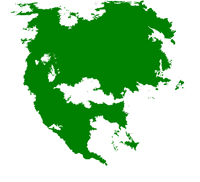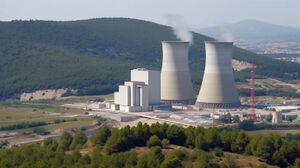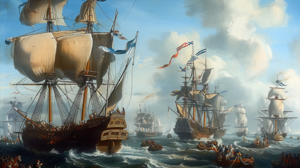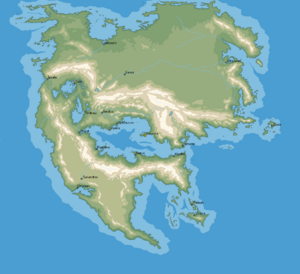Willink: Difference between revisions
mNo edit summary |
mNo edit summary |
||
| Line 36: | Line 36: | ||
|largest_settlement = <!--Name of largest settlement--> | |largest_settlement = <!--Name of largest settlement--> | ||
|official_languages = None | |official_languages = None | ||
|national_languages = [[Willinkian language|Willinkian]] <br> {{wp|Aramaic|Mariac}} | |national_languages = [[Willinkian language|Willinkian]] <br> {{wp|Aramaic|Mariac}} <br>{{wp|Udi language|Vataen}} <br> {{wpl|English language|English}} | ||
|regional_languages = <!--regional language--> | |regional_languages = <!--regional language--> | ||
|languages_type = <!--Use to specify a further type of language, if not official, national or regional--> | |languages_type = <!--Use to specify a further type of language, if not official, national or regional--> | ||
Revision as of 20:48, 10 October 2023
Basileia of Willink Willinkian: Βασιλεία του Φιλίνκισ Mariac: ܦܗܠܠܢܟܝܣ ܐܶܡܦܪܳܬܽܘܪܽܘܬܳܐ | |
|---|---|
| Motto: "Αναζητήστε με το σπαθί μια ήρεμη ειρήνη" "Seek with the sword a calm peace." | |
 Location of Willink (green) | |
| Capital | Salonika |
| Official languages | None |
| Recognised national languages | Willinkian Mariac Vataen English |
| Ethnic groups | Norian (64.0%), Marian (33.4%), Vetaen (1.4%), Minuccianite (0.6%), Anglo (0.5%), Niskau (0.1%) |
| Demonym(s) | Willinkian |
| Government | Common Law Propertarian Anarchism |
• Basileus | Nikephorus I |
| Establishment | |
• Founding of Norian Kingdom of Fospontis | Classical Antiquity |
• Accession of Fillinkis The Great | 328 BCE |
• Crown unification | 1420 CE |
| Area | |
• | 26,935,000 km2 (10,400,000 sq mi) |
• Water (%) | 15.9% |
| Population | |
• 2023 estimate | |
• Density | 779.17/km2 (2,018.0/sq mi) |
| GDP (PPP) | 2023 estimate |
• Total | $1.475 quadrillion |
• Per capita | $70,245 |
| HDI (2020) | very high |
| Currency | Various |
| Time zone | Kingston Mean Time |
| Driving side | right |
| Calling code | +8 |
| Internet TLD | .wk |
Willink (Willinkian: Φιλίνκισ), officially the Basileia and Crown Lands of Willink (Willinkian: Βασίλειο και Κτήμα Οικισμού του Φιλίνκισ) is a large transregional polity centered on the continent of Thalassia, predominantly located in the region of Haven.
Willink is a highly decentralized, propertarian, caesaropapisic, composite, multi-ethnic quasi-monarchy, encompassing a homeland in northeastern Haven and large overseas territorial holdings in Karain and Continentia. It is regarded as one of the oldest continuously existing states in Havenic history, having been established by Fillinkis The Great in the 4th century BC. Willink is not a state in the strict term, but rather a large collection of land holdings, estates, metropolises, titles, free cities, and other land associations unified either through direct title or apostolically under the Willinkian Basileus. "Governance", to the extent it exists at all, is organized under radical localism; the Geniká Akínita, literally "Estates General" is a voluntary association of defense agencies, land owners, and private individuals who coordinate common defense and foreign policy.
Willink's unique history, culture, and geographic positioning has proved a noteworthy bridge between geopolitical blocs in Haven, its legal system on one hand being founded on Praetonian Common Law and, conversely, its deeply religious society informing close ties with Doomingsland. Other historic allies include the Borman Empire, Cravan, Risban and Hailandkill. Willink adopted Christianity in the 3rd century; the Willinkian Orthodox Church has played a significant role in the development of Willinkian culture, identity, politics, and its practitioners form significant minorities in several other nations in Haven. Willink has at varying times constituted a member of the Saharistan War Coalition, Kingston Pact, Alliance for the Preservation of Civilisation (APOC), The Sovereign League, and has variously warred and maintained close relations with nations in Gholgoth. Historic strategic rivals of Willink include Yuslevakia, Granatia, Cohenia, and Aequatio.
Etymology
Willink is an english exonym and corruption of the Willinkian word Fillinkī́s, first propagated by Sennish-Prateonian traders. The dialect of the Sennish changed the [f] sound in Fillinkī́s to [v], rendering the name of the country Villinkī́s. This was misinterpreted as a voiced labial–velar approximant by Sennish sailors, who pronounced the name Wellenk. This was then re-interpreted by the Imperium Praetonianum's court as Willink, which was circulated throughout the known world in Praetonian official documents and vernacular language. The name is ordinarily rendered as Fillinkis by English speaking Willinkians; this name is also frequently used as an alternative English name. In Slavic romanization by Willink's eastern neighbors the name is usually rendered as Phillinkis.
Fillinkis Sibyrtius is considered to be the founder of Willink; contemporary sources refer to his rule as either the Fillinkis Dynasty (Willinkian: δυναστεία Φιλίνκιν') or Kingdom of Fillinkis (Willinkian: Βασίλειο του Φιλίνκιν), from which the present name of the nation is derived.
History
Prehistory
The Thalassian continent has records of human settlement dating to the neolithic era. The oldest excavated archaeological site in Willink is the Tell Rukka, a large mound outside the contemporary city of Raphana, the oldest sections of which have been dated to 5000 BC. Relevant among discoveries at this site include early evidence of obsidian tools and the extensive use of mudbrick construction, suggestive of an early trend toward urbanization.
Dating at ancient sites in the Fospontis basin paints an image of several multi-hectare settlements lining the sea's southern shores, ringed by pastoral hinterlands; indeed, recorded history suggests many of the large cities of Maria are the oldest extant settlements in Tharassia, predating their northern counterparts by several centuries. A great deal of historical research in Willink has been committed towards understanding the migration of language in this early period; the linguistic divergence of what are considered proto-Willinkian and proto-Marian appears to have been evident from 2500 BC; a hypothesized proto-Thalassian language is believed to have become extinct by 1500 BC. Earliest records of language in Willink suggest divergence dialects of this language were rendered in hieroglyph, but as of 2020 attempts to decipher this early use of language have been frustrated.
The most comprehensive form of written record in early Willinkian history comes by means of the Kanisian Empire, a Marian kingdom centered on the city of Kanis that subjugated prominent settlements along the Marian coast from 1300 BC; this includes early testament of sea and coastal trade routes, major settlements covering some 1200 km of coastline, and the early identification of Norian settlements and tribal polities in the vicinity of Lake Halone.
Classical Era
Dark Ages
Willinkian Golden Era
Industrialization and Colonization
Modern History
Geography

The primary landmass of Willink is the continent of Thalassia, located in eastern Haven. Its maritime borders consist of the Fyre Sea to the north and west, the Omz Sea to the southwest, the Omz Strait to the south, the Dayan Sea to the east, and the Aralonian channel to the southeast. The Pseira Islands, located offshore southeast of Thalassia are the largest island chain of Havenic Willink, covering some 19, 980 km² in area. The Eos Islands lie directly east of Thalassia, and are 4,150 km² in area.
With an area of nearly 16 million square kilometres, Willink is the ninth largest nation in Haven by land area, following Doomingsland, Aequatio, Praetonia, Zepplin Manufacturers, Soviet Bloc, Cotland, Questers and Hamptonshire. Willink's non-contiguous territories (Willinkian East Karain, Willinkian Bechuanaland, Willinkian Kantonos) cover some additional 10 million square kilometres, bringing an area of over twenty six million kilometres and an array of varying landscapes under the sway of the Willinkian Crown. The Thalassian continent is ordinary referred to as Mitéra Fillinkis, Mother Willink to differentiate it from overseas territories, Apoikía Fillinkis.
The Thalassia continent is bisected by a large inland sea, the Fospontis, which possesses a surface area of some 1,080,000 square kilometers. There exists three large freshwater lakes of significance: the Halone, Kalonymos, and Ophiousa. A series of ancient canals and waterways link the Fospontis with these lakes westward to the Fyre Sea near the city of Ipsala, permitting smaller commercial and military traffic in the region to enter the Fospontis from the west without navigating around the continental landmass .
Land relief can vary tremendously. Willink exhibits megadiversity, consisting of coastal plains and a vast steppe in the north, to arid desert and highlands in its southern expanses. Two large mountain ranges spine the Fospontis basin running west-east; the Vóreios range to the north and the Tiaret range to the south. The basin is noted for its Mediterranean climate.
The Willinkian steppe is a prominent geographic feature of Thalassia, running the length of the continent east-west and covering over 1,030,000 square kilometres. The steppe is intersected by several rivers, most significantly the Terástia River, which flow south to north from the highlands of the Vóreios mountains to Willink's northern coasts.
The confluence of the Fyre and Omz seas pushes prevailing winds over the continent and generates a mild climate; other than its mountains and steppe, Willink receives very little snowfall. Much of northern Willink is temperate broadleaf and temperate steppe, whereas its central portions exhibit a strong Mediterranean climate. In the south, Mediterranean coastal areas give way to a semiarid steppe zone and desert region, the Painted Desert (Willinkian: Vamméni Erimos) which develops into highlands and minor mountainous expanses carrying down the spur of the continent.
Demographics
According to estimates by the Fillinkís Statikí Koinonía, the current population of Willink is 21.02 billion persons. Willink has an average population density of 779.17 people per km². Willink is the ninth most populous nation in Haven, and the most populous nation situated in eastern Haven. Willink has a large external dispora, estimated to include some 1.2 billion people; it's largest populations can be found in Minucciano, Izistan, Hamptonshire, Praetonia, Cravan, Questers, Doomingsland, and Pacitalia.
Willink possess a fertility rate of 3.1 children per women, a rate of population growth considered very high for a westernized nation; large scale population growth has led to population density issues, especially in Willink's many urban areas where large swaths of cityscapes consist of historic built-out low and medium density city centers that are often over a thousand years old. This pressure has further accelerated emigration, particularly in the case of Minucciano, where nearly 25% of the population, some 1 billion persons, consists of Willinkian Norian and Mariac persons seeking greater availability of land.
Willink has no official language; the overwhelming majority of its citizens speak either Willinkian, an Indo-European, Hellenic language, or Mariac, a Semitic language endemic to the southern regions of the continent. English commonly serves as a bridge language. Though no comprehensive survey has been undertaken, it is believed to be the case that Willink is both one of the largest Hellenic speaking and Semitic speaking nations in the world based on total population; there are an estimated ten billion persons who use Willinkian as a first language, and five billion persons who utilize Mariac on a daily basis. Loanwords from both languages have entered Havenic lexicon over the course of centuries.
Cities
Willink possesses many vaguely-defined urban amalgamations. Given the lack of centralized governance, many cities have vastly outgrown their historic footprints to form continuous urban regions; this is especially true on both the northern and southern shores of the Fospontis sea, where outward population expansion has resulted in mirrored megalopolises occupying the majority of buildable coastline; the northern shore corridor, for example, has some 1.8 billion people living within twenty kilometres of the sea, and features multiple cities harboring more than ten million persons. As Willink does not possess a central government, and given the vast palatial land holdings of the Willinkian crown, three cities are historically held to possess preeminence and today constitute the three largest cities in the nation: Salonika, the historic capital, Epidaurum, the oldest and most prominent of the historic Norian cities, and Botrys, the historic seaside capital of the Willinkian Mariac population. Other large cities with regional prominence include the Mariac resort city of Abydos, the northern port of Neopolis, the easterly port of Ismaros, the center of Willink's expansive shipbuilding industry, and the large island city of Virasia.
Several features define the typical Willinkian city. The significant age of most cities centers, as well as a comparative lack of protection for historical preservation means that large percentages of old towns in Willink consist of buildings and road arteries constructed in the 18th and 19th centuries on top of much older foundations. A national culture of appreciation for Willink's long history and architectural significance that emerged in the early 20th century succeeded in staving off the demolition of much of its extant historic architecture, but a number of important historic sites were lost in the prior three centuries to population expansion. Willinkian cities are also not centrally planned, or built on grid networks, leading to a confusing morass of winding streets, lanes, alleys, and broad avenues that can prove confusing for foreign visitors. Willink also possesses no zoning restrictions, meaning skyscrapers regularly aren't built in specific high-density zone environments, often, the tallest buildings in Willinkian cities are found in newer periphery districts of major cities, better conducive to handling large volumes of traffic.
Largest cities or towns in Willink
Fillinkís Statikí Koinonía estimates for May 2020 | |||||||||
|---|---|---|---|---|---|---|---|---|---|
| Rank | Ethnic majority | Pop. | Rank | Ethnic majority | Pop. | ||||
 Salonika  Epidaurum |
1 | Salonika | Norian | 42,320,500 | 11 | Ismaros | Norian | 13,257,000 |  Botrys  Abydos |
| 2 | Epidaurum | Norian | 38,255,200 | 12 | Keriparon | Norian | 11,417,000 | ||
| 3 | Botrys | Mariac | 34,842,000 | 13 | Orfanion | Mariac | 10,887,000 | ||
| 4 | Abydos | Mariac | 31,260,000 | 14 | Ganos | Vatae | 9,655,000 | ||
| 5 | Neopolis Palaikia | Norian | 28,755,000 | 15 | Ipsala | Norian | 9,145,000 | ||
| 6 | Virasia | Norian | 23,623,000 | 16 | Serdica | Norian | 8,264,000 | ||
| 7 | Myrina | Norian | 22,187,000 | 17 | Eosia | Norian | 7,491,000 | ||
| 8 | Raphana | Mariac | 19,242,000 | 18 | Sale | Norian | 7,253,000 | ||
| 9 | Syriandros | Mariac | 17,817,000 | 19 | Pteleon | Mariac | 6,976,000 | ||
| 10 | Shalat | Mariac | 14,339,000 | 20 | Antheia | Norian | 6,582,000 | ||
Ethnic Groups
Willink is a diverse, multinational polity, encompassing two primary peoples and numerous other ethnic groups."Willinkian" is generally understood to constitute a shared self-identity with various ethnic, religous, cultural, and philosophic traits, given the internationalist and cosmopolitan character of the polity.
Willink has historically been stratified into several major ethnic populations. The largest of these are Norians (or Norii), a group endemic to the northern region of Thalassia. An indo-Havenic, Willinkian speaking population, the Norian population of Willink is estimated to exceed ten billion people. Genetic inquiry via study of hapologroup affinity has identified their closest genetic distance families to be those of the Doomani and Zukarri, thus constituting amongst the region's earliest identified hypothetical prehistoric populations, though the mechanism of the early migration of these people is poorly understood. "Willink" in an ethno-national sense is often inaccurately conflated with its Norian population in foreign nations given their size and significance, as well as the primacy of the Willinkian language, but significant overlap and ethnic syncretism over the course of centuries has diminished this distinction.

Southern Willink constitutes an approximate historical geographical region know as Maria, largely populated by Marian people. A semitic people numbering some six billion who speak an autochthonous language known as Marian, this population has exerted strong influence on Willinkian culture, literature, religion, science, trade, and have constituted several ruling dynasties of the polity. Much of Willinkian history is a story of relations and power struggles between the Norian and Marian states, and today the Marians occupy a space as one of the most unique, significant cultures in Haven writ large.
Willink's long political relationship with Minucciano, as well as religious and linguistic similarities has resulted in the immigration of several hundred million Minuccianites into Willink; these ethiosemitic people have attained cultural and economic prominence as well; they constitute the wealthiest, most prominent black population in all of Haven, and have shaped Willinkian foreign policy, particularly its economic retrenchment from Questers, whose cultural aptitudes toward its own black population are considered marked by racial prejudice.
The Vatae are another significant population of Willink; this Indo-Iranian pastoral people traditionally inhabited the vast Willinkian Steppe and the northern hinterlands of the Vóreios mountain range; today they constitute the fourth largest population residing within Willinkian territories. Of additional note is Willink's Niskau population, a Slavic ethnic group related to and originating from Cohenia that settled on the north-eastern shores of Thalassia that still constitute large percentages of the minority population in those regions, as well as Dolichians, an admixture Norian-Vatae population inhabiting a region known as Dolchia on the south-eastern coast of Thalassia.
Willink does not possess any immigration laws; accordingly, it is home to a vast array of immigrant populations, principally business related expatriates from Sovereign League countries. Historically, Praetonians make up the largest percentage of this population, followed by Cravanians, Doomani, Questarians, and Spizanians. These populations, with the exception of the Doomani are colloquially referred to as Anglos, given their usage of English and national origins in the expansion of Praetonian settlers across wide ranges of territory in Haven.
Self-identity of these groups varies wildly, and has been heavily impacted by geographic inaccessibility, Christianization, and expansive decentralization.
Religion
Religiosity in Willink (est. 2020)
Willink adopted Christianity as a state religion in 287 AD. The Willinkian Orthodox Church is one of the oldest extant Christian churches in Haven and its early adoption of the faith has led to significant divergence from Chalcedonianism. The Willinkian church is variously considered to fall within the eastern tradition, as well as constitute a Miaphysite belief. Theologians hold that this distinction is primarily semantic, and Christologically differentiation between the Willinkian Orthodox Church and what would be considered Eastern Orthodoxy is negligible. Willinkian Orthodoxy employs a distinct Willinkian language rite, and it is estimated to include some ten billion parishioners. The ecclesiastical structure of the church is organized in a tetrarchy, headed by the patriarchs of Salonika, Epidaurum, Botrys, and Myrina.
The second largest church in Willink is the Ancient Miaphysite Church of Maria, with an estimated 3.3 billion practitioners. In contrast with Norian-centric Willinkian Orthodoxy, the Marian church utilizes a Marian rite. Both the Miaphysite church and Orthodox church engage in Full communion, though this theological unification has proved a source of controversy, and has historically figured the cause of numerous wars, rebellions, and ethnic cleansing in religiously striated communities. Other large Christian communities in Willink include the Minuccianite Oriental Church, Doomani Catholicism, and Praetonian Anglicanism.
The Willinkian Vetaen community historically were practitioners of Mithraism; by the second millennium this community gradually converted to Zoroastrianism. Despite a protracted multi-century effort of Christianization, there are still an estimated 450 million practitioners, making the faith the largest non-Christian sect in the nation. Willink is thought to possess the largest Zorastrian population in Haven, as well as one of the largest in the known world outside of states such as Parthia. Religious snycretism between Zoroastrianism and Christianity has further generated a large Manichaean community of some renown.
Willink is considered to be a deeply devout nation; its population is 96% Christian, placing it in the upper percentiles of the world in terms of Christian identification. The segment of population identifying as secular or irreligious is estimated to be as little as one percent. Willink also has a long history of religious militarism; many of the largest defense organizations in Willink are religious military orders, and the employment of religious warfare proves to be a continued a source of social and ethnic tension.
Education
There is no system of compulsory education in Willink; education is provided through a complex network of private institutions, religious schools, charity schools, and myriad of experimental alternative entities. Willink is considered an international hotbed for deschooling, unschooling, open source learning, and online learning; accreditation is ordinarily handled through a series of voluntary organizations, the largest of which is the WOSA.
Willinkian courts have consistently rejected arguments that education constitutes a common good rather than a service, that education constitutes an external economy, and that external parties have the legal standing to compel parents against their will to force children into educational arrangements. Willink was an early opponent of the public school movement, taking the posture that the philosophy was a statist, monopolistic, tacitly religiously-motivated movement to abrogate the rights of its citizens being fostered by foreign actors, most notably theorists from Aequatio and Yuslevakia.
Administrative Divisions
Willink possesses a complicated system of administrative division. In terms of immediacy, the largest recognized divisions of Willink are its two kingdoms, Fospontia and Maria. The Willinkian Imperial title (Crown) is a unification of these two crowns, an accomplishment first actualized by Fillinkis Sibyrtius that linked the Norian Kingdom of Fospontia with the Kingdom of Maria. Prior to the disestablishment of political office in the 18th century these constituent kingdoms held devolved political power in their specific estates in an arrangement similar to a composite monarchy, but today exist solely as cultural and statistical distinctions. Both kingdoms are divided administratively into Themata; this developed initially as a religious distinction between eclessiastical diocese and as a means of organizing military recruitment, but its prolonged influence has led to its consideration as the primary sub-national method of organization; most Themata, for example, organize their own collective security, organize statistical analysis of their populations, coordinate long-distance transportation projects between associations, and organize and codify religious hierarchy.
Beyond the two kingdoms of Willink, the next most common sub-national method of organization is into the category of Crown Lands. Crown Lands vary in size from the property of a single building to state-sized territories; when used in reference to Willink's Havenic administrative divisions it is usually referring to the largest of the Willinkian Crown Lands, of which two of particular significance are Stépa, a multi-thousand kilometer expanse in north-central Willink that borders Fospontia, and Néagi, a territory encompassing the most northwestern expanses of the continent. Crown Lands are ordinarily organized into Episkopies based on church jurisdiction, which is most usually used for regional and statistical differentiation; Eparchies is also used in a synonymous fashion for sub-units of both Themta and Crown Lands in the same manner other states use administrative terms such as county, though it carries no political distinction.
Willink also possesses several non-contiguous territorial holdings; this includes the Crown Lands of Willinkian East Karain, and Willinkian Bechaunaland in the region of Karain, the Crown Land of Kantonos in the region of Dayuan and the Episkopi of Károlospoli in former Yuslevekia, southern Haven. The Willinkian Crown also possesses the Exarchate of Minucciano in personal union, a multi-billion person Afroasiatic polity in Karain.
Government
In contrast with most modern states, Willink does not possess a monopoly on violence, and therefore does not collect taxes, conscript its citizens, or otherwise create supranational obligations upon its citizenry, accordingly, it is commonly referred to as "anarchist", "individualist anarchist", "anarcho-capitalist", or "propertarian anarchist" and opposes large anti-sovereign constructions such as the World Assembly. This system of Common Law propertarianism resembles that seen in other Sovereign League member states, most notably Praetonia.
Willink practices what would be considered radical decentralization; most organization for what would be generally considered political purposes (collective security, planning of infrastructure) happens at a local level; this includes defense associations, land associations, infrastructure associations, insurance and medical networks, charitable associations, et al. These associations are broadly organized into estates, which interact with the estate of the Basileus and permit large scale collective organization of military and geopolitical efforts.
The Willinkian Basileus holds the title Apostolic Majesty, according them de jure leadership of the Willinkian Orthodox Church. This means there is no practical distinction between church and emperor or empress, a geopolitical construction that means Willink is occasionally classified as a theocratic monarchy in the same vein as polities such as Stevid.
Political theorists have variously described Willink as both a pseudo-monarchy, given the vast devolution of sovereign powers ordinarily held to constitute sovereignty, and as a decentralized capitalist state given the strong institutional defense of private property; the nature of Willink and the extent to which it legal and social organization constitutes a state has proved an ongoing philosophic debate in academia for over a century.
Law
Willink is organized under a system called Díkaio, a Willinkian term for the Praetonian philosophy of Common Law. Díkaio constitutes a devolved polycentric common law and private law system of competing courts and jurisconsult associations. As such, it is organized under a theory of case based restitutional justice grounded on property rights, custom, contractual relationships, and reputation. Notably, in contrast with most extant legal systems, persons in Willink are not compelled by threat of violence to attend trial, nor subject to any civil legislation or, in most instances statutory enforcements.
Díkaio permits defensive violence, but generally prohibits imprisonment; private prisons and debtors' prisons do exist, explicitly for the purpose of economic restitution as established under tort. Prisoners in Willink are paid as a means of incentive for their labor, while the rest of their productive utility covers costs of incarceration and victim restitution. Prisoners have the legal protection to select their own institution of imprisonment. The rate of incarceration in Willink is very low, given the complete lack of victimless crimes and generous legal protections, e.g. castle doctrine, afforded parties employing defensive violence to dissuade violent criminality.
Willink does not posses any government police forces, its duties instead being performed by a multiplicity of common law parties, limited but not including to, investigative agencies, private security services, restitution agencies, community security cooperatives, et al. Aggrieved parties in Willink can sell property rights in their claims to damages to security agencies, a means of contractual passive law enforcement; the primary purpose of these market institutions is to compel defendants to appear in court when complaints have been entered against them rather than to engage in interdictive policing.
Willink is noteworthy for featuring some of the most accommodating gun laws in the known world; with the exception of strong civil liability given potential risks of storage of nuclear, biological, and chemical weaponry, the Willinkian legal system permits unlimited ownership of private armaments, including, among other platforms, small arms, including automatic firearms, artillery, missile systems, armored vehicles, and warships. A unique facet of Willinkian military culture is the presence of Artillery and Ordinance Clubs, private organizations often organized by locality which permit private citizens grounds and facilities to fire and train on high-caliber and explosive weapon systems. Estimates put the number of small arms in private ownership in Willink at over eighteen billion weapons.
Military
Despite possessing a heavily armed, militarized society, Willink does not possess a standing state army. Military power in Willink is organized into a myriad of defense agencies and estate militias. Principal among these are: Imperial military forces, military units under direct command of the Willinkian Basileus; Holy Orders, religiously-based, church-sanctioned crusading defense agencies, and the armies of the estates, large associations of defense agencies organized at Themata-scale levels for collective defense purposes; often, allegiances among professional soldiers can overlap between multiple organizations. Given the nonexistence of citizenship in a legal sense, large percentages of Willink military forces consist of either foreign volunteers or mercenaries; historically the most striking example of this is the employment of Doomani citizens in Willinkian military units. There are estimated to be some 150 million people employed in a military capacity in Willink, or roughly ten persons per capita.
Willink is considered a case study in the private provision of defense services, featuring a complex system of private firearm ownership, legal protections and penalty, risk management of defense services, and various entities capable of providing scaleable security from individual commercial security to air superiority. Nkrí Group, a Willinkian financial services firm publishes credit and risk assessment (CRA) reports on defense firms, their legal risk and safety certification which are considered authoritative in the region and a functional template for market regulation of defense services in foreign nations.
The Willinkian Crown is a nuclear armed polity; its nuclear arsenal includes land and sea-based missile systems, artillery, torpedoes, and naval mines. Willink is one of several dozen states to have utilized nuclear weapons in combat, both during the Saharistan War and during attacks on The Burnsian Desert fleets during their attempted invasion of Haven.
Political Ideology
Willink abolished the majority of its political institutions at the start of the 18th century, in a sequence of events and wars referred to as Megáli Apelefthérosi, the Great Liberation; partially a response to the collapse and revolution in the Senland Commonwealth in Praetonia, and partially a function of the influence of its burgher class and historically decentralized administration. This intellectual movement served to radically shift political life in Willinkian society, resulting in an explosion of both left and right anarchist and libertarian philosophy and social experimentation.
Willink does not possess political parties or representative political institutions. Most social organization is conducted in a radically decentralized, voluntary organizational manner, either individually through incorporation and engagement with the Willinkan system of property laws, or collectively through large scale anarchist or religious communes subjected to their own internal administration. Further, as the polity does not possess any extradition treaties or crimes against the state, Willink has often proved a significant destination for intellectuals fleeing political prosecution in foreign countries; Yuslevakian anarchist and revolutionary leftist intellectuals fleeing to Willink and the tensions resulting therein were important political elements to the disintegration of relations and later, armed warfare that erupted between the two nations during the Pan-Havenic Twenty Year's War.
Foreign Relations
The orchestration and composition of Willinkian foreign policy is a keen interest of international relations scholars given the unique nature of the polity. As Willink does not possess a central government orchestrating foreign policy, national actors are free of their own will to pursue overseas policy goals; as a practical manner however, foreign states usually rely on two entities to conduct relations with the Willinkian polity; the Foreign Office of The Crown, a component of the Crown Estate corporation sole commissioned by the Willinkian emperor to conduct relations with foreign governments, and the Overseas Department of the Geniká Akínita which represents the interests of property holders residing in or possessing assets in Thalassia. Often, these two groups will have competing policy aims, given Willinkian law permits foreign persons residency and property holdings; in particular, wealthy actors from countries sharing the same legal system (Praetonians, Questarians, Cravanians, etc) have significant sway in what little consensus can be established within the Estates for foreign policy ends.
Willink traditionally maintains extremely close relations with its legal system counterparts, often being grouped into the Havenic Anglosphere despite not speaking English as a primary language or being founded by the same peoples. Additionally, the states of Hamptonshire, Soviet Bloc, Okielahoma, and Cravan are considered close economic and security partners. Willink has maintained a close relationship with Doomingsland for centuries, engaging in military cooperation in Karain and against Allanea during the Presto-Clandonian war. Notably, Doomingsland provided military aid to Willink during the Kravanian-Lone Alliance War, despite Willink engaging in direct conflict against a Doomani CAD ally in Parthia. As a general principle, Willink usually takes a peaceable posture to foreign affairs, given large scale conflicts such as The Macabean War of Golden Succession often involve parties on both sides with whom Willink possesses economic interests.
Willink has been involved in a decade-long international dispute with the Gholgoth nation of Parthia over the territorial status of the former nation of Very Small Island, with the island's administration divided between a northern self-governing amical protectorate supported by Willink and Spizania, and southern region annexed into Parthia; the general Willinkian view, endorsed by its regional allies and neutral third parties such as Sarzonia and Pacitalia is that the Parthian presence constitutes an unlawful occupying force that has orchestrated forced displacement and enslavement of the indigenous population. This dispute has erupted into warfare on two occasions, most recently during the Kravanian-Lone Alliance War in 2006, and is considered a flashpoint for potential conflict between nations in Haven and Gholgoth.
Economy

With the second highest gross domestic product per capita in Haven (following Hamptonshire) and a quadrillion dollar gross national product, Willink is noteworthy foremost as an economic powerhouse. Practicing what theorists have described as free market anarchism, Willink does not engage in taxation, or enforce any intellectual property laws. Willink is a worldwide center of tax avoidance and offshore financing. With no state imposed compliance costs and unlimited protection of foreign property ownership, Willink is a global center for multinational business incorporation; multinational conglomerates expansive enough to conduct their own foreign polices such as Raven Corps were previously headquartered in Willink. The long history of private enterprise in Willink has effected the culture of the nation, drawing peoples of multiple cultures and nationalities into roles of prominence over the course of history, and shaped the polity into an important wealth shelter and expatriate destination.
Willink is one of the wealthiest, most productive nations in Haven on a per capita basis, and possesses a highly diversified economy noted for its shipyards, consumer electronics, alcohol production, glass-works, military equipment, banking, mining, cannabis, and chemical industries. Willink is a net petroleum and natural gas exporter, possessing vast gas and oil reserves, both in its territorial waters, deserts, and foreign territories of Willinkian Saharistan and Willinkian East Karain. Willink is consistently ranked among the most entrepenurial nations in Haven, with a healthy national savings rate and nonexistent cost impediments to business startup. In contravention of worldwide trends toward postindustrialism, Willink maintains a vibrant manufacturing sector, a function of its monetary stability, productivity-driven deflation, and flexible labor markets.
Willink practices free banking; there is no central planning of the money supply or of economic indicators; banks privately issue currency and engage in issuance of digital currencies. Willink is the principal banking center of eastern Haven, and its banks possess a worldwide footprint and market capitalization. In particular, Willinkian banks often serve as bullion banking and cash exchange functionaries for other nations to secure specie, owning to their nonexistent regulation, powerful contacts and relations across the world, comparative geopolitical stability, and renowned institutional privacy.
Solidus is used to refer to coinage and paper moneys produced for circulation in Willink; Solidus or Solidi historically referred to the issuance of specific gold coinage minted by the Willinkian Crown, but through centuries of usage has been appropriated as a catch-all term for speice moneys circulated in Willink, usually standardized to a floating unit of account. Along with specie coinage, the Willinkian economy makes prolific utilization of gold and silver foil based bank notes as functional substitutes for fiat paper. Foreign currencies, particularly those issued in Sovereign League states also find common usage.
Willink's economic life was historically centered on its central region of the Fospontis Basin. With the advent of global and regional trade in the 17th century, Willink's location at the convergence of two key regional seas served it immensely; an east-west trade route running from Goobergunchia and the Democratic Underground, Questers, Allanea, Scandavian States, Clandonia, and Praetonia, as well as a north-south route passing Franberry, Skinny87, Akimonad, and Omz. This central location made Willink an important way station on trade heading eastward out of Haven, and southward directed towards the Havenic colonial region of Karain. Praetonia, Clandonia, and Chevrokia today constitute its largest trade partners.
Willink is a major producer and exporter of advanced military equipment, being an integral production partner on seminal projects such as the Havenfighter as well as a producer of missile systems, combat aircraft, warships, radar systems, and land vehicles.
Thalassia has proved one of the most popular tourist destinations in Haven for centuries, owing to its warm climates, many beaches, accessability, exotic culture and fauna, and many preserved historical sites. Willink has traditional figured one of the principal stops in the Havenic Grand Tour.

Culture
Willink possesses a multifaceted culture that has been influenced by a number of factors: the long history of the polity, being among the oldest nations in the region, the influence of religion on cultural life, the status of its legal system leading to syncreticism with its fellow common law states, the existence of multiple nations within the polity harboring their own unique cultures, the internationalist nature of the polity, and the significant soft power wielded by Willink owing to its economic prowess and historical attractiveness. Willinkian popular media, especially film and music have a profound regional impact, as well as its culture of alcohol, sports, and philosophy harboring particular acclaim.
Visual arts
The production of art in Willink has a history spanning some three thousand years, covering diversified mediums including frescos, mosiacs, panel painting and sculpture. The comparative peace accorded the Thalassian continent, especially in the period after the 12th century, has permitted a great deal of inquiry into the nature and historicity of Willinkian art mediums. Willinkian artifacts and art pieces are often components of Havenic museum installations.
Willinkian revivalism architecture grew to prominence in the early 20th century, flourishing in Willink, its colonial territories and throughout Haven.
In the field of painting, Willinkian artists are particularly well known for their work in the fields of symbolism, impressionism, and landscape romanticism, often incorporating nostalgic interpolations and appeals to Willinkian historicity and art elements.
Cuisine
Willinkian cuisine is characterized as a Mediterranean and Levantine style of cooking, with traditions cultivated over two thousand years. Willinkian cuisine has influenced the food habits of its neighbors, particularly Praetonia, Cohenia and Ichkeriya.
Willink is a prominent producer of alcoholic beverages, including beer, liquor, and wine. Willink possesses a vibrant craft brewing market, largely composed of small regional or town breweries. Zythos, the ancient term for beer originated in Mariac polities and later gained popularity in the north. Willink's religious and alcohol cultures are closely intertwined, with monasteries historically also figuring as prominent brewers. The Willinkian climate has led to a traditional emphasis on adjunct-driven beers; Willink is considered an early progenitor of sour and fruit beers, and styles such as old ales, IPAs, and wheat beers are among the most popular. The Willinkian city of Myrina hosts an annual Brewers Olympics of particular renown that draws entrants from over ninety different nations. Common liquors with strong market presence in Willink include ouzo, brandy, limoncello, and imported Cohenian vodka.
Drugs
There are no legal prohibitions on drug production or consumption in Willink, an economic curiosity that has resulted in the polity, along with regional neighbors Questers and Allanea developing a massive narcotics market. Market research by the OIED has suggested that, taken as a whole, Haven is the largest regional producer of legal and illicit drugs in the entire world. It is thought that cannabis, derived from the Willinkian word κάνναβις originated regionally in Willink, and today constitutes the largest cash crop and non-liquid intoxicant used regularly in the nation. The Willink cannabis industry supports some twenty five million jobs and produces over 750,000 metric tons of the plant per year, both in vast outdoor acreage and in indoor growhouses; various alternative forms of the drug, including tinctures, food additives, edibles, and waxes and oils are also popular.
In contravention of global health trends, tobacco remains an important crop and commonly used drug in Willink; large multinational Questarian-Willinkian corporate entities as well as smaller artisan growers encompass an expansive market space. Spliffs, cigarettes prepared with both cannabis and tobacco are extremely popular in Willink and are often sold in corner shops and milk bars. Other popularly consumed drugs include cocaine, MDMA and the various classes of psychedelics.
Music
Willinkian popular music encompasses a multitude of genres. In particular, Willink is considered a regional and international taste maker in black music, especially hip-hop, jazz, garage, funk, R&B, and gospel, primarily spearheaded by its Minuccianite population. Sampling is a common feature of Willinkian popular music, given the total lack of copyright protections permitting artists to combine huge volumes of sampled material into original music. Willinkian popular music is often marked by syncopation, a disregard of quantization, prolific incorporation of sampled elements, and a strong emphasis on drum patterns.

Sports
Sports occupying a significant portion of Willinkian cultural life; in particular, the two most preeminent sports in Willinkian society are gridiron football and basketball. Other important sports with national footprints include Olympic weightlifting, formula car racing, baseball, and football.
Willink is a prominent gridiron football nation on the world stage, securing a decisive victory in the 2011 Baptism of Iron tournament. There are an estimated 23.2 million secondary school aged gridiron football players in Willink, making gridiron both the most popular amateur sport and collegiate sport. The preeminent Willinkian gridiron professional league, the Ethnikós Podósfairo Sýndesmos (EPS) has a worldwide footprint, drawing talent and viewership from foreign nations such as Okielahoma, Cohenia, Sarzonia, and Barkozy. Basketball is another significant sport at which Willink has attained international acclaim, recording multiple region championships in tournament play, and drawing talent from far flung foreign regions such as Karain to play in its popular professional leagues.
The third most popular sport in Willink is baseball; the highest level of Willinkian baseball, the Fillinkis Énosi Béizmpol (FEB), features twenty four teams and is considered the most prominent of Havenic baseball leagues, drawing athletes from beyond the region.




















